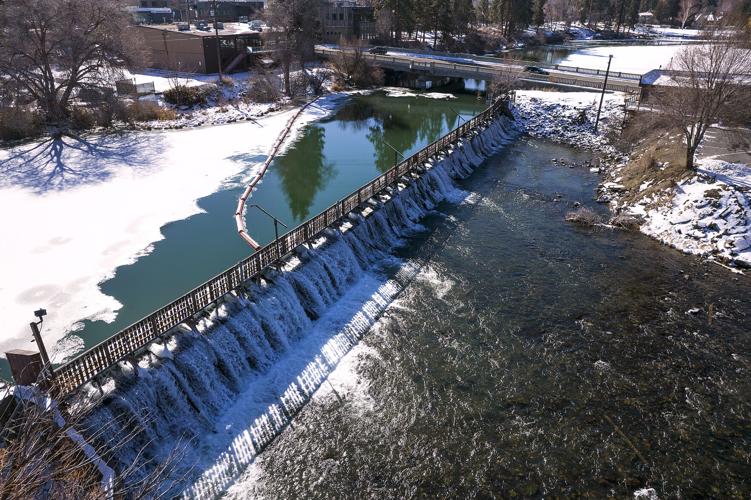This article was published on: 02/26/22 10:13 AM
Public invited to comment starting this spring
While costs of each have yet to be determined, in general, Ediger said a traditional fish ladder can be cheaper than the other options. But it also brings other challenges, such as ongoing maintenance to keep ice off the structure in the winter. They are also not as aesthetically pleasing, she said.
The rock ramp looks more natural, but presents other challenges such as possibly introducing invasive species when bringing in the materials to build it, and possibly being vulnerable to a high water event, Ediger said. A high water event could possibly displace the carefully placed rocks, which could lead to maintenance work in the future.
“You want to make it effective for the fish and also durable and sustainable,” she said.
A natural fish byway also is more aesthetically pleasing and creates a natural channel that directs fish around the dam, but also faces the challenge of having invasive species be introduced when natural materials are brought in to build it. Another factor to consider is whether in low-water times fish will still be able to use it, Ediger said.
“The key thing we are trying to do is make sure fish pass and any of these structures will get that job done,” she said.
The first phase of design is already underway, which hopefully will rule out any option that truly isn’t viable at all, Ediger said. The public will be invited to comment on the designs in the public meeting sometime in May, she said.
The next phase will do more in-depth design work on one option, and the public will be again invited to comment, Ediger said.
The advisory committee will then make a recommendation to the park board and the Bend City Council. A decision made by each public body isn’t anticipated until early fall, said Don Horton, the executive director of the park district.




